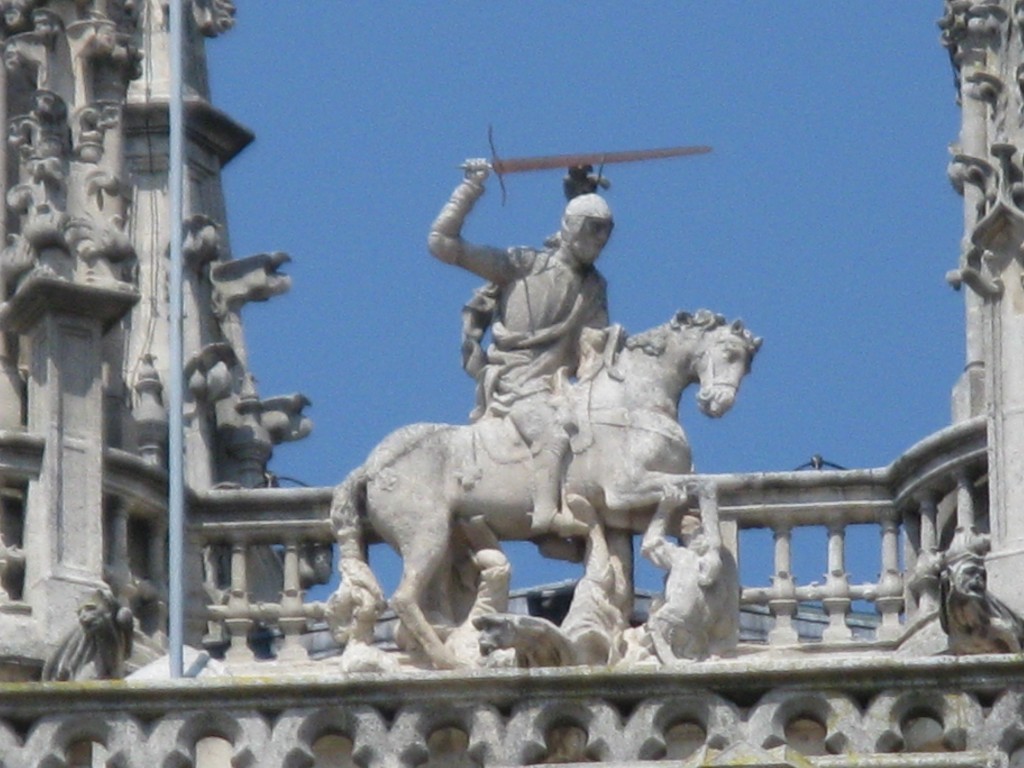Soldiering On

Carving of Santiago Matamoros on the Cathedral in Burgos. Notice ‘the Moors’ under the hooves of the horse. Where did my pilgrim go?
Around 813 A.D. the bones of St James were discovered within a small cave in Mt. Libredon, a few miles north from what is now Padrón, Spain. Once the bones were authenticated by the local bishop, pilgrims started arriving. A small town grew around it, and soon the church that housed the relics became the seat of the bishop.
The relics, conveniently enough, were exactly what the Christians needed in their war against the invading Moors, responding to the Moors’ own use of relics to rally their soldiers forward. Then, it only took thirty years for a vision of St. James to appear, mounted on a white horse, leading the Christians into battle. Santiago Peregrino (or St. James, Pilgrim) had become Santiago Matamoros (St. James, Moor-slayer).
Nice.
There’s a lot wrong (and quite frankly, sickening) with this: the fact the pilgrimage became a money making machine (as nobles and pilgrims alike donated vast sums of money to fuel a war in the name of St. James the Apostle); the larger notion of battle condoned by ‘the sacred’; and, not to mention, the racist implications of aggrandizing the violent idea of “Moor-slaying.”
One can’t escape or deny the ‘sketchy’ (at best) history tied in with the myth of the Way — if one is to be a true pilgrim. However, one can turn the journey into something deeply personal and meaningful to their own life and reclaim some of the sacred.
Without ignoring the history behind it, I can gain strength from the idea that the serene pilgrim is also a formidable soldier. Though I may support a peaceful agenda, don’t get me mad. I will turn the sword of religious-fueled hatred against itself and fight for a more accepting tomorrow.
